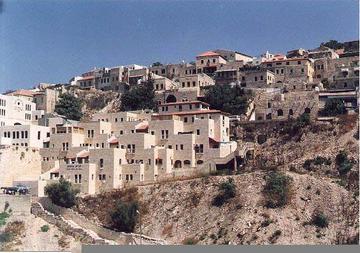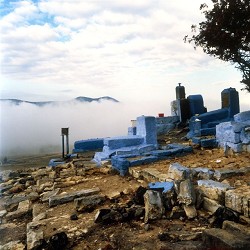Experiencing the history of Safed
March 17th 2013
 The city of Safed is one of Israel’s four holiest cities. It was home to the rabbis and students of the Jewish mystical movement, known as Kabbalah, in the 16th century. The city was home to well-known sages such as Rabbi Shlomo Alkabetz (author of the Lecha Dodi poem sung on Friday nights in the synagogue) and Rabbi Isaac Luria (the Ari), who founded a new stream of Kabbalah.
The city of Safed is one of Israel’s four holiest cities. It was home to the rabbis and students of the Jewish mystical movement, known as Kabbalah, in the 16th century. The city was home to well-known sages such as Rabbi Shlomo Alkabetz (author of the Lecha Dodi poem sung on Friday nights in the synagogue) and Rabbi Isaac Luria (the Ari), who founded a new stream of Kabbalah.
The Old City of Safed is reminiscent of Jerusalem’s Old City, with narrow cobblestone alleys and somewhat haphazard arrangement of buildings. It was one of the few areas of the Holy Land to be inhabited by Jews during the Medieval Period. The relatively large Jewish community maintained a number of synagogues that can be visited today.
 The Ari Sephardic Synagogue is the oldest synagogue in Safed and was the Ari’s primary synagogue. It was destroyed by an earthquake in 1759 and rebuilt in 1840. Due to its strategic position at the edge of the Jewish Quarter, it served as an important defensive position prior to and during the War of Independence. For years after the war, the synagogue was in disrepair, but it has been renovated in recent years.
The Ari Sephardic Synagogue is the oldest synagogue in Safed and was the Ari’s primary synagogue. It was destroyed by an earthquake in 1759 and rebuilt in 1840. Due to its strategic position at the edge of the Jewish Quarter, it served as an important defensive position prior to and during the War of Independence. For years after the war, the synagogue was in disrepair, but it has been renovated in recent years.
The Ashkenazi Ari Synagogue was the place from which the Ari and his disciples would proceed to a nearby field to welcome the Sabbath. In the eighteenth century, European Hasidim took over the synagogue. It was a shelter for the Jews of Safed during the War of Independence, and a hole where a piece of shrapnel hit the floor (but miraculously hurt no one) is still visible.
The Abuhav Synagogue is different from all other synagogues in that it has not one, but three holy arks. When visiting this synagogue, don’t miss the Torah scroll from the Middle Ages.
Rabbi Yosef Caro was another famous resident of Safed. In addition to his mystical writings, he also wrote the most widely-used codification of Jewish law, the Shulchan Aruch. The Yosef Caro Synagogue was rebuilt after the earthquake with Italian stone and houses a number of ancient Torah scrolls.
A visit to Safed is not complete without a walk through the cemetery and a dip in the Ari’s mikveh (the ritual bath is men-only). The Ari and Rabbi Yosef Caro are buried in the cemetery, as are other famous sages from the 16th century. Some of the graves are traditionally known as the resting places of Hosea the Prophet and Rabbi Pinchas Ben Yair, of Mishnaic fame.











